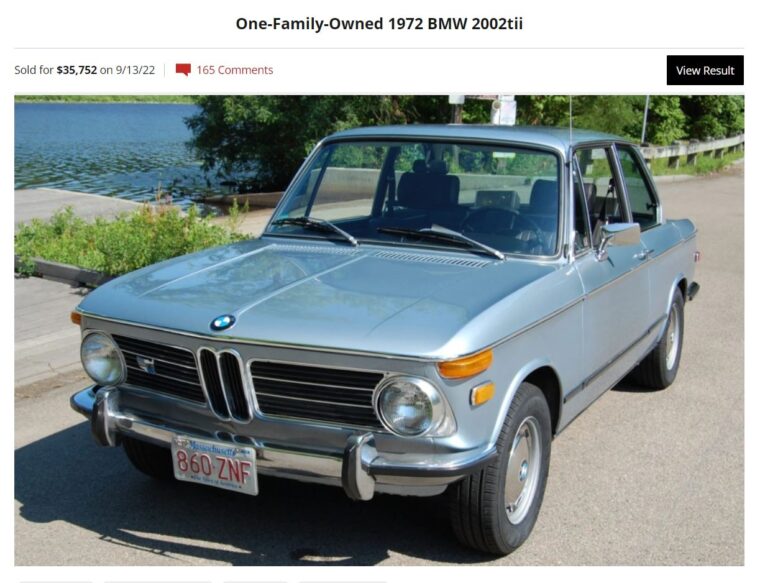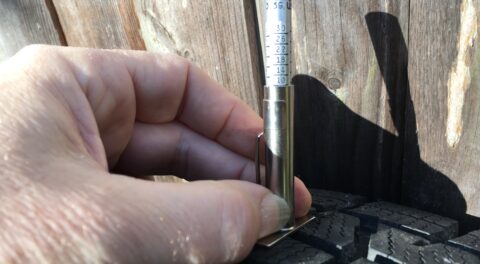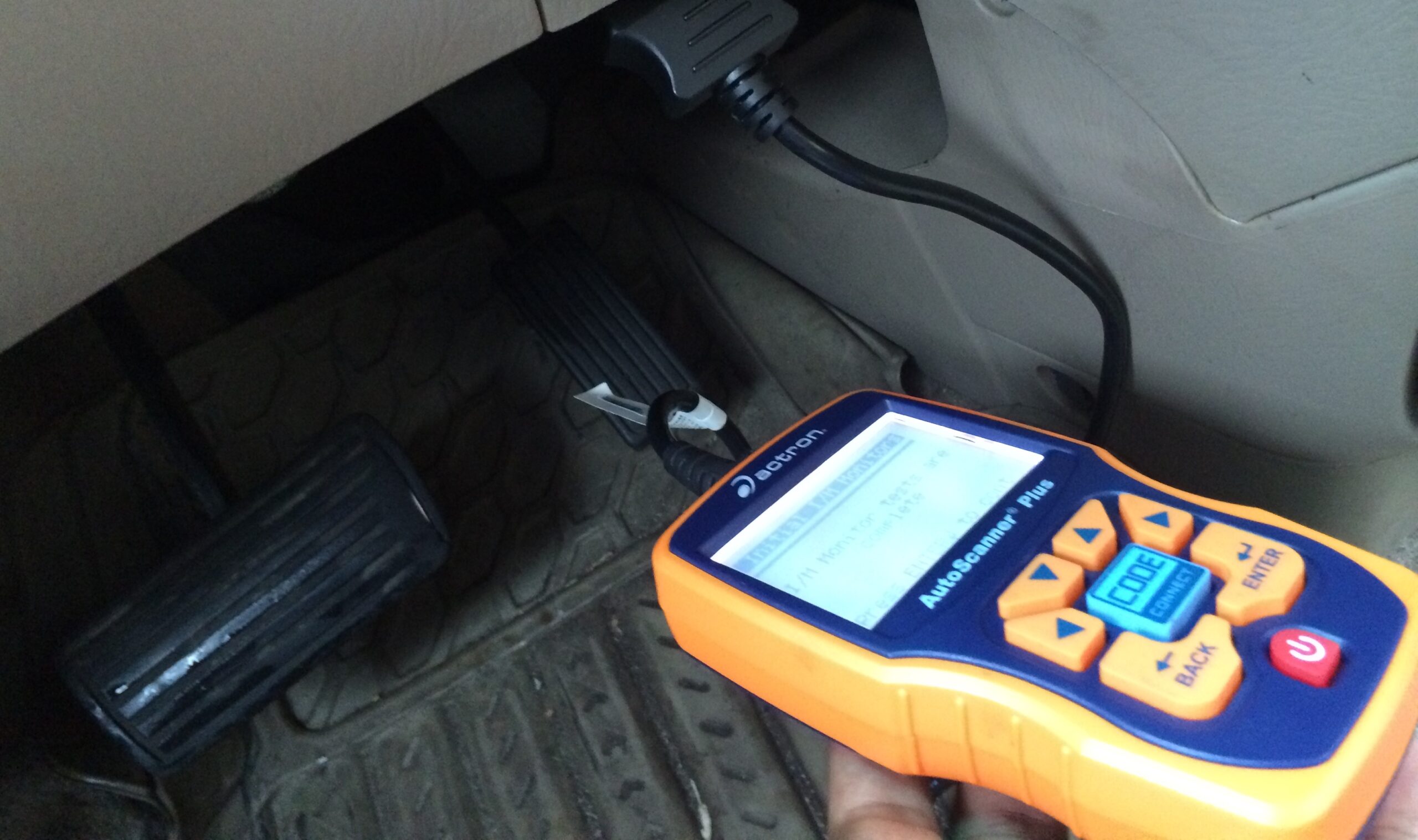The story of “the mitzvah” (good deed)—my helping sell two 2002s for two local women who inherited them from their late husbands—is nearly at an end. As I wrote last week, Chris’ 1972 2002tii, the car that she and her husband Jim called the Baby, finally went up on Bring a Trailer (BaT). It sold on Tuesday. Considering that I first looked at the car in mid-June, this makes it a three-month mitzvah (the guidance is to consult your doctor if a mitzvah lasts more than four months).
While best-of-the-best tii’s with eat-off-it-clean undercarriages have brought six figures, the Baby was far from an open-checkbook restoration example. Jim obviously loved the car, but he certainly wasn’t a moneyed collector; when I first saw the car, it was clear to me that although it was lovely in its Fjord blue paint and its stock interior, and although it was as rust-free as you’re ever going to find a New England car, its value was capped by the rust-remediation work it received in the 1990s, which included installation of a non-tii snorkel nose, visibly non-original nose-attachment welds on the inner fenders and fender corners, the presence of a hard, black, gravel-guard-like coating in the engine compartment and on portions of the undercarriage that were reworked, visibly repaired rear shock towers, and waxy black Ziebart undercoating in the trunk.
Other value-capping characteristics included a factory replacement engine (the original presumably seized numbers-matching engine is still in Chris’ garage), the 203,000 miles, the odd presence of black reupholstered front seats when the rest of the interior is Navy, and indoor-outdoor carpeting masquerading as floor mats and hiding a missing piece of the original salt-and-pepper German loop rug.
Oh, and the engine compartment included some howlingly incorrect fuel-hose routing, a washer bottle from who knows where, a battery that was flipped around the wrong way, generic battery cables from AutoZone that were a thumb in the eye to the image of originality, and a positive battery-terminal protector that was tied in place with a piece of rope.
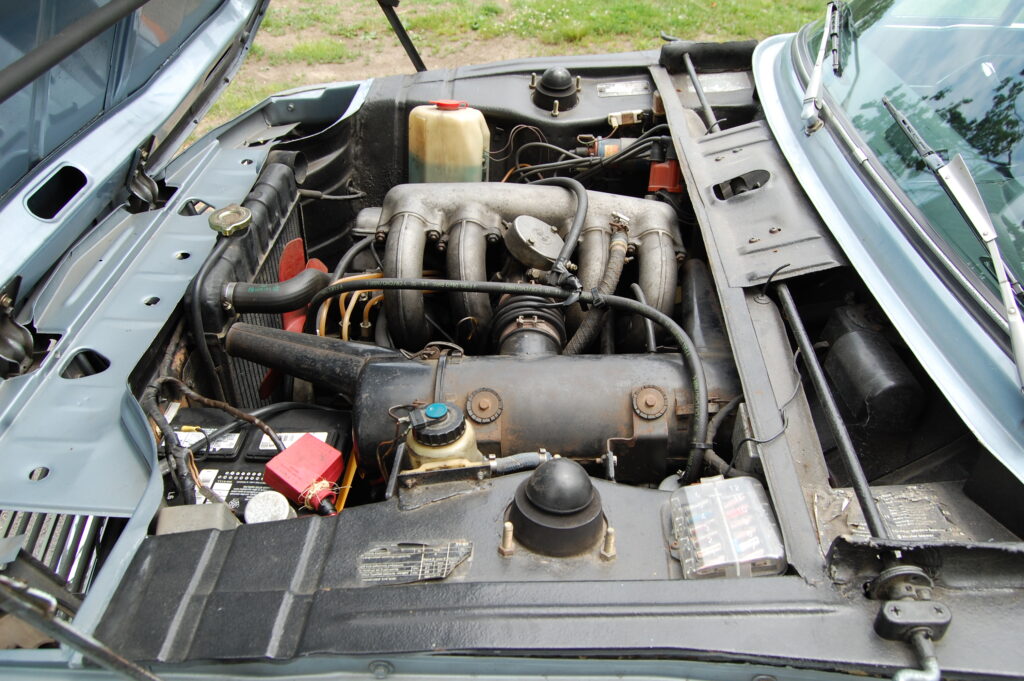
Yeesh. Had the car been sold before these things were corrected, it would’ve likely knocked $15,000 off the auction value.
In addition to the body issues, a test drive revealed that the car needed mechanical work, the top layer of which was that the clutch hydraulics were visibly leaking, the brake pedal went nearly to the floor due to badly-worn rear shoes, and the directionals weren’t functioning, which in turn prevented the car from getting inspected and being driven legally.
As I’d said previously, Chris told me the poignant story: When Jim’s health was failing and he was putting his affairs in order, he told her, “Don’t sell the baby for less than $60,000.” Another BMW friend of hers and I both advised that the Baby was not a $60,000 car. I felt that, as-is, someone like me might pay in the low twenties for it, and that, with work and preparation, it could probably sell on BaT in the $30,000-to-$35,000 range.
And I felt honor-bound to try to make that happen.
After I took delivery of the car and began working on it, I found many more things that needed repair or replacement, including a stringy injection belt, badly worn accelerator-linkage components, crunchy front wheel bearings, and the requisite worn-out lock-rod bushings that made it sound like the doors were packed with loose coat hangers. I estimated to Chris that with parts and a reasonable labor rate for me, it’d run about $1,500 to get the car ready for sale, plus a flat $500 fee for me to represent the car for her on BaT. This fee was to include photography, description, managing the auction, and handling shipping after the sale.
Even with me charging only about a third of the hours that I actually worked, the expenses came to nearly twice that. I photographed everything, described the car thoroughly, and, as I described last week, posted the lengthy description in the first few comments of the BaT auction when it went live.
I am keenly aware that my brand of hyper-truthful disclosure helps me to sleep at night but probably doesn’t help a car’s value reach its zenith. However, the body issues with the Baby were so obvious that if I didn’t point them out, BaT commenters certainly would.
The comments were hugely supportive of my honesty. There were many like this one: “I have never felt better about an auction on BaT than this one. I wish all were conducted as well as this.”
Within two days, the bidding was at $20,000. But then, as is often the case, it sat there. Yes, all of the action in BaT auctions is usually at the end; unlike eBay, where the ending time is fixed, on BaT, when a bid comes in in the last two minutes, the countdown is reset to two minutes, thereby encouraging bidders to keep exceeding their budget in $500 increments—but when I listed my 49,000-mile 2002 “Hampton” on BaT eighteen months ago, the bidding stalled well short of the reserve and never resumed.
With only an hour to go, the auction price of the Baby was only at $22,500. It was déjà vu; I felt like I’d overdone the honesty and shot myself in the foot again. Hell, $22,500 is what the car probably would’ve sold for three months ago had I done zero work to it!
But then it began to creep up. With two minutes left, the bidding was at $27,500, within striking distance of the $30,000 reserve. BaT cautions you not to reveal the reserve. I know that there are pros and cons to this, but I wanted to let folks know how close they were, so I gave a seat-of-the-pants signal. Read the list of BaT comments below from the bottom up.
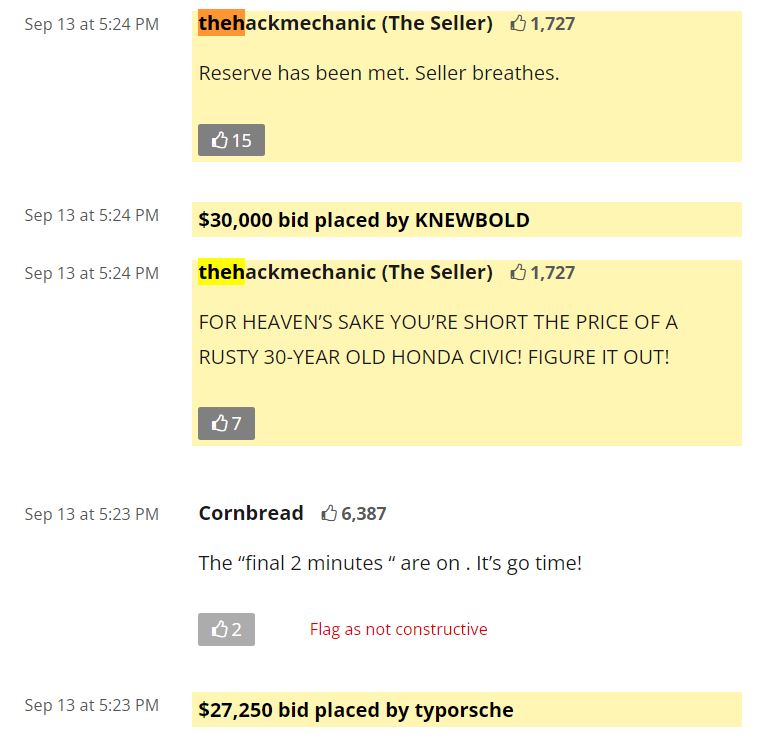
I’ll admit that I enjoyed this immensely.
With the reserve met and acknowledged, up the bidding went. It came to rest at a very respectable $35, 752. Some folks commented that this was a steal, and that the car should’ve gone for much more, but Chris and I were both thrilled. It was at the top of the range that I’d floated to her three months ago. I felt that given the car’s not-easily-correctable flaws, it was exactly the right price.
I also had an odd interaction with a commenter near the end of the auction. Someone asked a question about whether air conditioning could be installed in the car. I gave a short answer and posted a link to my air-conditioning book. As the auction neared its close, there was a comment from someone that my a/c approach of using original evaporator assemblies was flawed, and that the best approach was instead to replace both the a/c and the heater components with a modern climate-control system. I responded that I respectfully disagreed—that the climate-control-box approach disabled the stock sliders and eliminated the ability to get fresh air into the car through the vents, and that with the rising value of these cars, most buyers with a stock-looking survivor car such as this one would probably want a stock-looking a/c system to match it, not an aftermarket console and HVAC controls that would be more in harmony with a “build” (I hate the term “restomod”).
All of this was fine, a perfectly acceptable proffering of two different approaches. But then the fellow posted again, somewhat stridently talking about his hundreds of satisfied customers. A bell went off in my head, and I realized that the poster was a gentleman with a business. The last thing I wanted was the auction to get sidetracked as it came down the stretch by an a/c discussion driven by someone pushing their wares, so I said, “I hope you can appreciate that this is a wildly inappropriate place and time to try to sell your systems. Please stop.” He didn’t, saying that letting bidders know about the climate-control option could only help the sale of my car.
It really rubbed me the wrong way—I mean, really, who does that when explicitly asked not to?—but fair, open-minded me had to admit that he had a point, so I let it be. BaT allows anyone, not just the seller, to flag comments as “non-constructive,” and other readers flagged them.
Finally, there has been some confusion regarding the buyer. From the beginning, Chris said that she wanted to get the car into the hands of someone who’d love Jim’s Baby as much as he had. I advised her that in an auction, you have zero control over the buyer, and that even in a personal sale, you have less control than you’d think, because people lie; someone may plead to you that this is a working-man father-son project, and then three months later you may see the car flipped on BaT.
Since I was representing the car for Chris on BaT, the buyer information came directly to me. The buyer’s name sounded like it could be a woman, but the email listed included a man’s name. Despite several emails and phone calls, Chris and I had trouble getting a response. In addition to simply wanting payment for the car, this was important, because Chris was leaving for a road trip to Nova Scotia to scatter Jim’s ashes, and if papers weren’t passed before she left, it’d have to wait until she got back.
On my end, the car has been taking up precious garage space at my house since June, and with my obligation to Chris complete, I’d like it gone.
When Chris was finally called by the buyer, it appeared that he was yet a third person, someone at a Porsche dealership in Los Angeles. As of this writing, Chris is off to Nova Scotia, and I have her signed title, so if she reports that she’s received a wire transfer payment, I can mail the title to the buyer.
It’s a somewhat messy and prolonged last mile. But, hey, it isn’t a mitzvah unless you see it through to the end.—Rob Siegel
Rob’s new book, The Best of The Hack Mechanic, is available here on Amazon, as are his seven other books. Signed copies can be ordered directly from Rob here.

